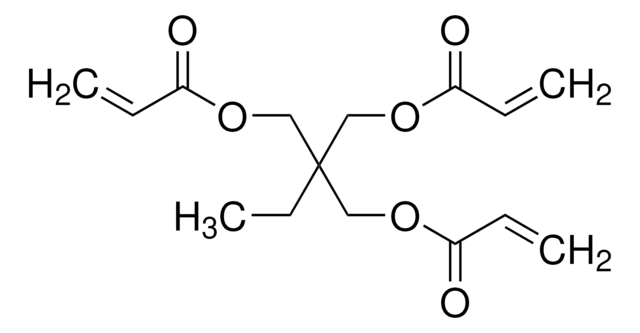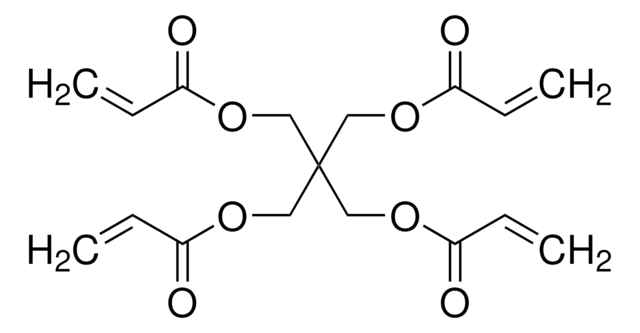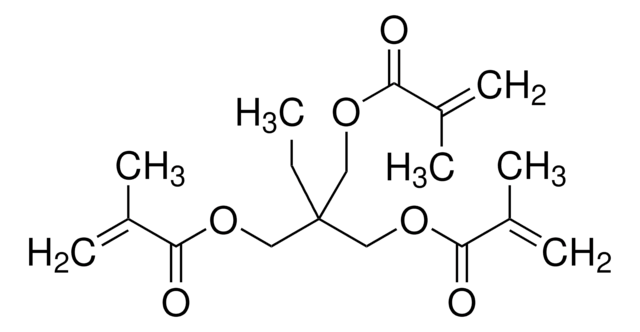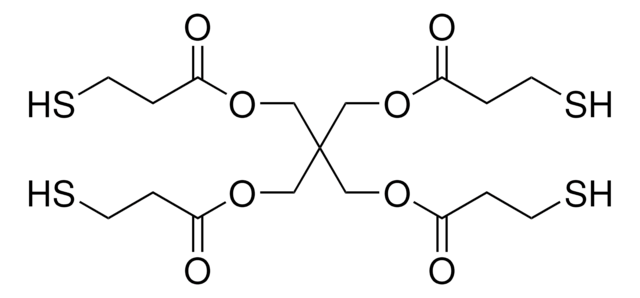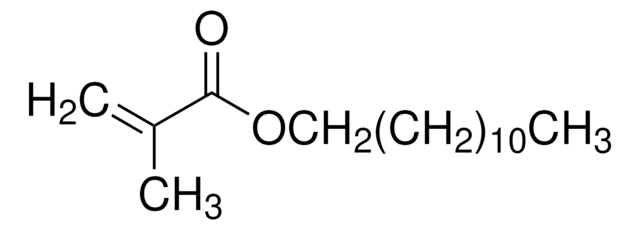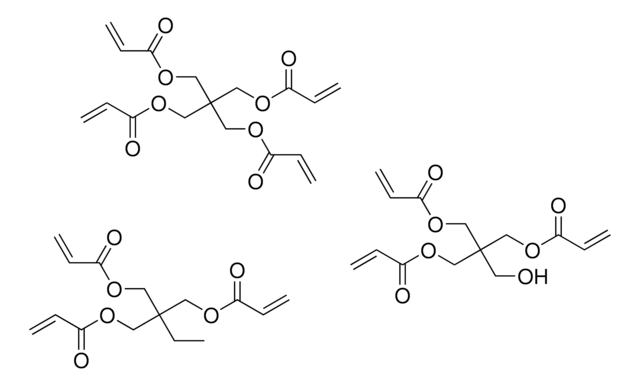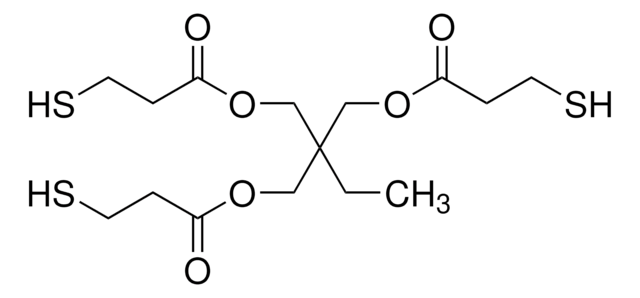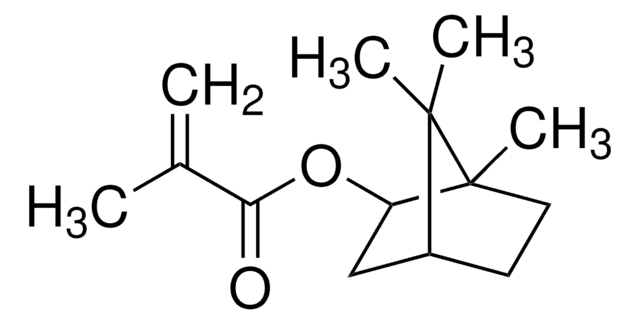Wichtige Dokumente
246840
Trimethylolpropantrimethacrylat
contains 250 ppm monomethyl ether hydroquinone as inhibitor, technical grade
Synonym(e):
TMPTMA
About This Item
Empfohlene Produkte
Qualität
technical grade
Dampfdichte
>1 (vs air)
Dampfdruck
<0.01 mmHg ( 20 °C)
Enthält
250 ppm monomethyl ether hydroquinone as inhibitor
Brechungsindex
n20/D 1.472 (lit.)
Dichte
1.06 g/mL at 25 °C (lit.)
SMILES String
CCC(COC(=O)C(C)=C)(COC(=O)C(C)=C)COC(=O)C(C)=C
InChI
1S/C18H26O6/c1-8-18(9-22-15(19)12(2)3,10-23-16(20)13(4)5)11-24-17(21)14(6)7/h2,4,6,8-11H2,1,3,5,7H3
InChIKey
OKKRPWIIYQTPQF-UHFFFAOYSA-N
Suchen Sie nach ähnlichen Produkten? Aufrufen Leitfaden zum Produktvergleich
Verwandte Kategorien
Allgemeine Beschreibung
Anwendung
- Poly(hydroxyethyl methacrylate) (pHEMA) nanocomposites that are used in the dental industry.
- Silicone rubber with a reduced bleed-out ratio.
- Organic monolithic column by living/controlled free-radical polymerization. This column can be used as a stationary phase in capillary liquid chromatography.
- Macroporous poly (glycidyl methacrylate-co-trimethylolpropane trimethacrylate) materials with fine controlled porous properties.
Lagerklassenschlüssel
10 - Combustible liquids
WGK
WGK 2
Hier finden Sie alle aktuellen Versionen:
Besitzen Sie dieses Produkt bereits?
In der Dokumentenbibliothek finden Sie die Dokumentation zu den Produkten, die Sie kürzlich erworben haben.
Kunden haben sich ebenfalls angesehen
Unser Team von Wissenschaftlern verfügt über Erfahrung in allen Forschungsbereichen einschließlich Life Science, Materialwissenschaften, chemischer Synthese, Chromatographie, Analytik und vielen mehr..
Setzen Sie sich mit dem technischen Dienst in Verbindung.